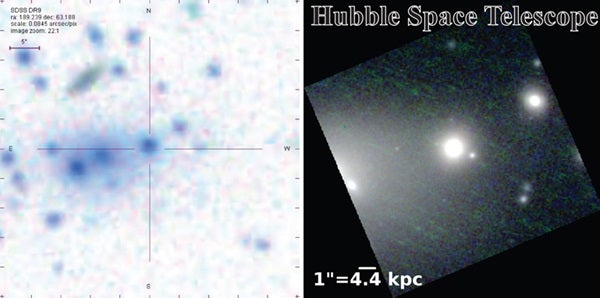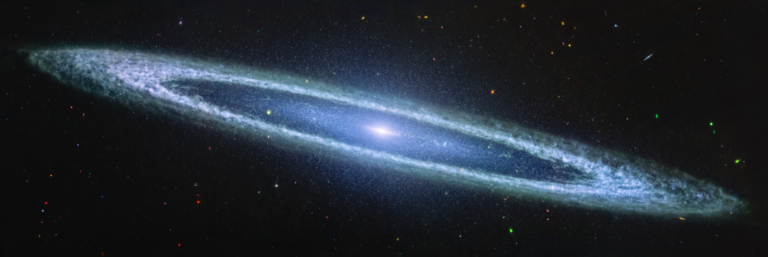Since no “red nuggets” were seen nearby, astronomers wondered why they had disappeared over time. New research, however, shows that they didn’t disappear completely. In fact, they were simply hidden within the data of previous surveys.
Astronomers now realize these newfound compact galaxies could represent a missing link between distant “red nuggets” and nearby elliptical galaxies. They may light the evolutionary path to show how compact galaxies age over time and reveal whether these stellar groupings are the “seeds” for the monster ellipticals we see today.
To find the nuggets, astronomer Ivana Damjanov of the Harvard-Smithsonian Center for Astrophysics and her colleagues searched databases from the Sloan Digital Sky Survey. Although the “red nugget” galaxies are so small that they appear like stars in photographs from ground-based telescopes, their spectra — the specific wavelengths of light they emit — give away their true nature.
“Looking for ‘red nuggets’ in the Sloan Digital Sky Survey was like panning a riverbed, washing away silt and mud to uncover bits of gold,” said Damjanov.
By sifting through the Sloan data, the team dug up more than 600 “red nugget” candidates. They are located at distances of 2.5 to 5.7 billion light-years from Earth.
They then investigated the Hubble Space Telescope database to find photos of the patches of sky where those objects are located. Serendipitous images of nine targets confirmed that they are as compact as more distant “red nugget” galaxies. The most massive weigh up to 10 times more than the Milky Way but are up to 10 times smaller than our galaxy. As a result, they’re called compact massive galaxies.
“We think there are more of these red nuggets, or compact galaxies, hidden in the universe, waiting to be discovered,” says co-author Ho Seong Hwang of the Smithsonian Astrophysical Observatory in Cambridge.
The team’s future plans include using the Hubble Space Telescope to investigate more of these compact massive galaxies to learn where they live and what their internal structures are.










